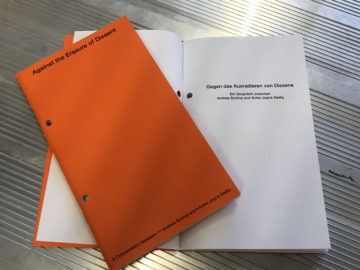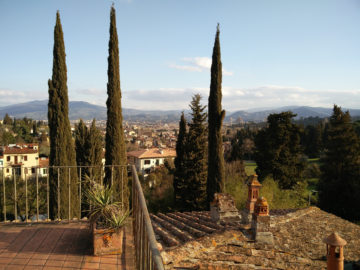A Conversation between Andrea Scrima and Anike Joyce Sadiq

The following conversation took place from November 2021 to February 2022 via e-mail in reaction to a general meeting of the Villa Romana Association that took place on October 28, 2021 in Martin-Gropius-Bau, Berlin. The authors participated in this meeting in their function as members, having been actively involved for two years in a group of artists that had formed in response to a new funding situation. When there was no longer any way to prevent a simultaneous changeover in directors, the group sought to at least preserve the Villa Romana as a place created by artists for artists and to ensure that the general direction of the program established under Angelika Stepken be continued.
The Villa Romana was founded in 1905 as a German art association in Florence. In addition to an exhibition program and numerous collaborations with artists as well as with art and cultural institutions both local and international, the Villa Romana Prize is awarded each year to four artists or collectives from Germany in the form of a ten-month residency and grant.
This conversation attempts, from the authors’ perspective, to reconstruct, contextualize, and archive the discussions that occurred between artist members and the board and the course these took over time. It poses questions about membership and the extent of agency it allows, and inquires into the role artists play in shaping institutional structures. Financial and political dependencies, the seeming openness of a diversity-based policy toward art and culture, and the (re)distribution of the real and symbolic capital that becomes legitimized by a non-profit status are subjects of investigation. Read more »

